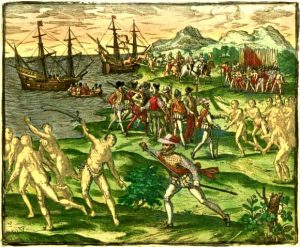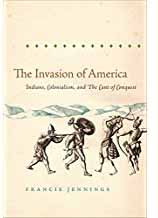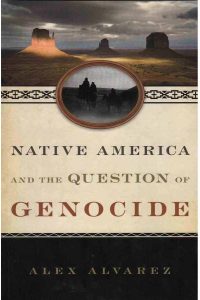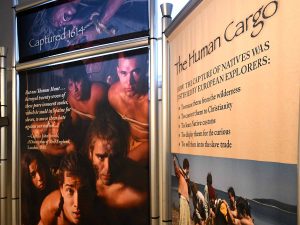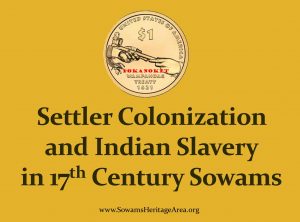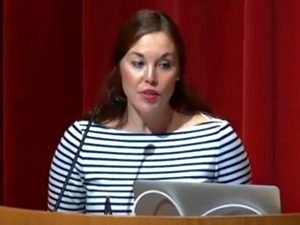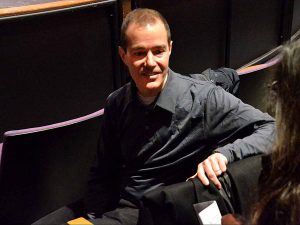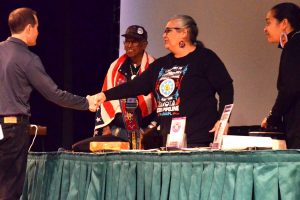

The settler colonialism and ultimate cultural genocide of American Aboriginal people in Sowams began prior to the arrival of the Pilgrims with the loss of 90 percent of the aboriginal populations along the coast. Death from contagious diseases such as small pox was known to have originated from European traders in 1616. Subsequent outbreaks over the next fifty years resulted in the gradual decline of aboriginal populations from and estimated 140,000 to 10,000 between 1600 and 1675 while the European population expanded from about 100 to over 50,000 during the same period of time. Click here for a new theory for the cause of the Great Dying 1616-1619. Click here for a 30-minute video about the Great Dying.
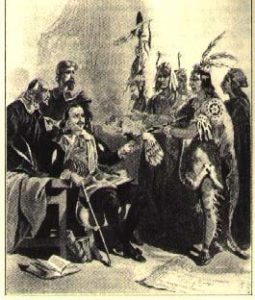

Initially, Massasoit welcomed the Pilgrims in the spring of 1621 after they landed at Plymouth and showed them how to successfully plant their crops the following spring. However, a series of land purchases led to the gradual expansion of English people into long-held Native lands.


Forty years later, the English began to try to systematically convert the Natives to Christianity and established “Praying Towns” where they were requred to take up English customs, dress and hairstyles and abandon tribal beliefs.Residents of these towns were moved to Deer Island in Boston Harbor during the King Philip War were many died of starvation and exposure.


Following Massasoit’s death in 1661, a series of injustices and the increasing encroachment of the colonists on Aboriginal land led to the outbreak of a war in which the tribes banded together to drive the colonists back to England. Due to a lack of gunpowder and diminishing food, the American Aborigine were gradually overtaken by the English militia under the leadership of Colonial Benjamin Church. King Philip was shot near Mt. Hope, drawn and quartered, and his head displayed on a pike in Plymouth for forty years as a warning to any remaining Aborigine.
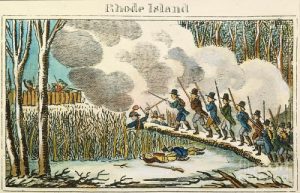

A massacre of over 400 Native Narragansett men, women and children on December 19, 1675 followed the pattern of a similar massacre of Pequot people in 1637 and served as a model of how to deal with tribes across the country in the following two hundred years. A monument to the Great Swamp “Fight” stands today near the site in South Kingston, RI.
Following the close of the King Philip War in 1676, those American Aborigine who were not killed in the War were either enslaved locally, sold into slavery in Barbados or banished to Maine or tribes outside of the region. In the 19th Century, American Indians were designated as “black” in censuses beginning in the 1920s. In 1880-1884 the state of Rhode Island “detribalized” the Narragansetts. It wasn’t until the 1970s that they were able to reclaim part of their land and gain Federal recognition in the 1980s.
Click here to read an excellent summary of both the methods and outcomes of the enslavement of Native people following the King Philip War by Linford Fisher of Brown University.
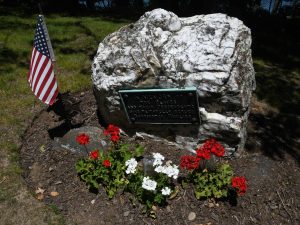

A marker placed in the Princess Hill Cemetery in Barrington in 1903 memorializes slaves and their descendants who faithfully served Barrington families. It is assumed that this refers to enslaved American Aborigine as well.
Numerous books written in the past fifty years have documented American Aborigine enslavement and genocide. (Click on any of the above for a link to the books on Amazon.)



